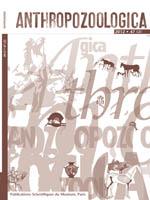Animal milks have been used in infant feeding for at least a few millennia, but this can only have become a common practice after the domestication of dairy animals during the Neolithic. Neolithic population increase has often been attributed to the effect of a reduction in breastfeeding duration on female fertility. It is possible, therefore, that animal milks were first introduced to the infant diet at this time as a replacement for the lost breastmilk. Milks are complex liquids and are species specific. The consumption of the milk of one species by the infants of another thus has implications for the welfare of those infants. This paper reviews some of the differences between the milks of three ruminant species and human milk and discusses what the health consequences of introducing these animal milks to the infant diet are likely to have been. It is argued that, except in extreme circumstances, animal milks would fail to adequately compensate for the reduction in breastmilk consumption. Fermented milk products could however have been valuable weaning foods if consumed alongside other iron-rich products.
How to translate text using browser tools
1 December 2012
The Milky Way: The implications of using animal milk products in infant feeding
Rachel Howcroft,
Gunilla Eriksson,
Kerstin Lidén
ACCESS THE FULL ARTICLE
It is not available for individual sale.
This article is only available to subscribers.
It is not available for individual sale.
It is not available for individual sale.

Anthropozoologica
Vol. 47 • No. 2
December 2012
Vol. 47 • No. 2
December 2012
alimentation complémentaire
alimentation du nourrisson
Allaitement
Breastfeeding
Complementary Foods
Dairying
démographie




